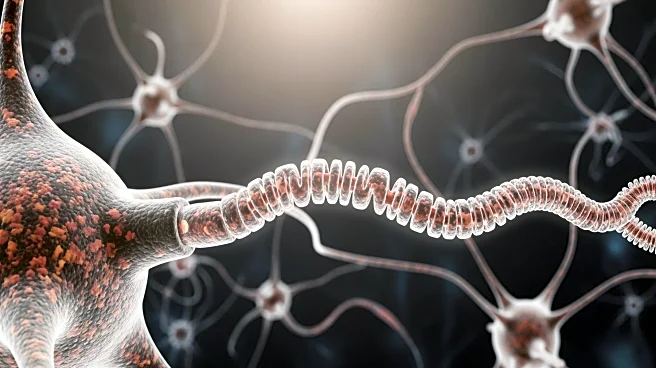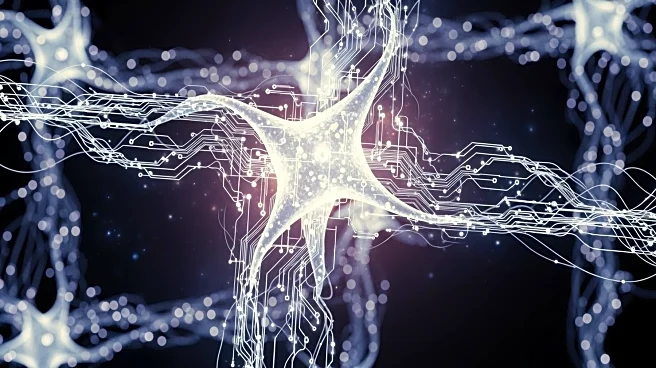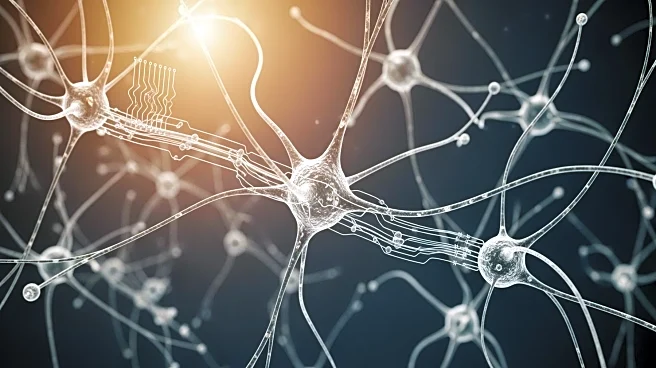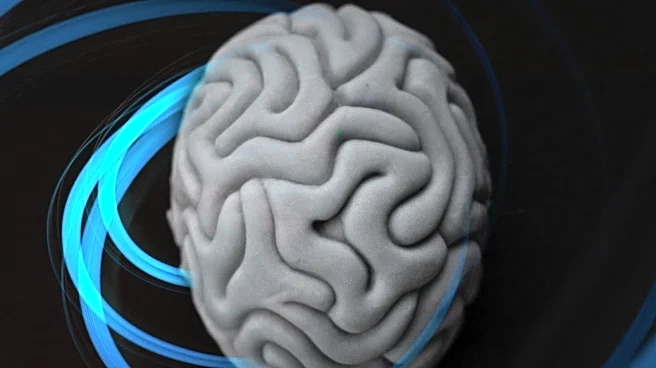What's Happening?
Recent research has challenged a century-old understanding of brain cell structure, specifically regarding unmyelinated axons. Traditionally depicted as smooth tubes in scientific textbooks, these axons have now been shown to possess a repeating pattern
of small bulges and narrow links, resembling 'pearls on a string.' This discovery was made using high-pressure freezing techniques to preserve brain tissue, allowing researchers to observe these structures in a near-living state. The study, published in Nature Neuroscience, reveals that these patterns are not artifacts of the preservation process but are present in living tissue. The geometry of these axons affects the speed of electrical impulses, acting as a built-in control for signal timing. This finding suggests that the axon membrane's shape can shift with everyday activity, providing a real-time mechanism for adjusting signal conduction speed.
Why It's Important?
This discovery has significant implications for our understanding of neural function and plasticity. The ability of axon membranes to adjust their shape and, consequently, the speed of electrical signals, offers a new perspective on how the brain can fine-tune its operations without altering synapse numbers or myelin. This could impact various neurological fields, including sensory processing, rhythm generation, and learning. The research highlights the role of membrane mechanics in neural function, suggesting that small changes in membrane composition or tension can have substantial effects on signal conduction. This could lead to new approaches in treating neurological disorders or enhancing cognitive functions by targeting these membrane properties.
What's Next?
Future research will likely focus on mapping how different components, such as membrane lipids and cytoskeletal elements, contribute to setting the geometry of axons in various neural circuits. Understanding how these factors influence axon structure and function across different species and brain regions could provide deeper insights into the universality of this control mechanism. Additionally, exploring how pharmacological interventions might modulate these membrane properties could open new therapeutic avenues for neurological conditions.
Beyond the Headlines
The discovery underscores the complexity of neural structures and the importance of revisiting established scientific theories with advanced technologies. It also highlights the dynamic nature of the brain, where even small-scale structural changes can have significant functional consequences. This research may prompt a reevaluation of other long-held assumptions in neuroscience, encouraging a more nuanced understanding of brain function and adaptability.













